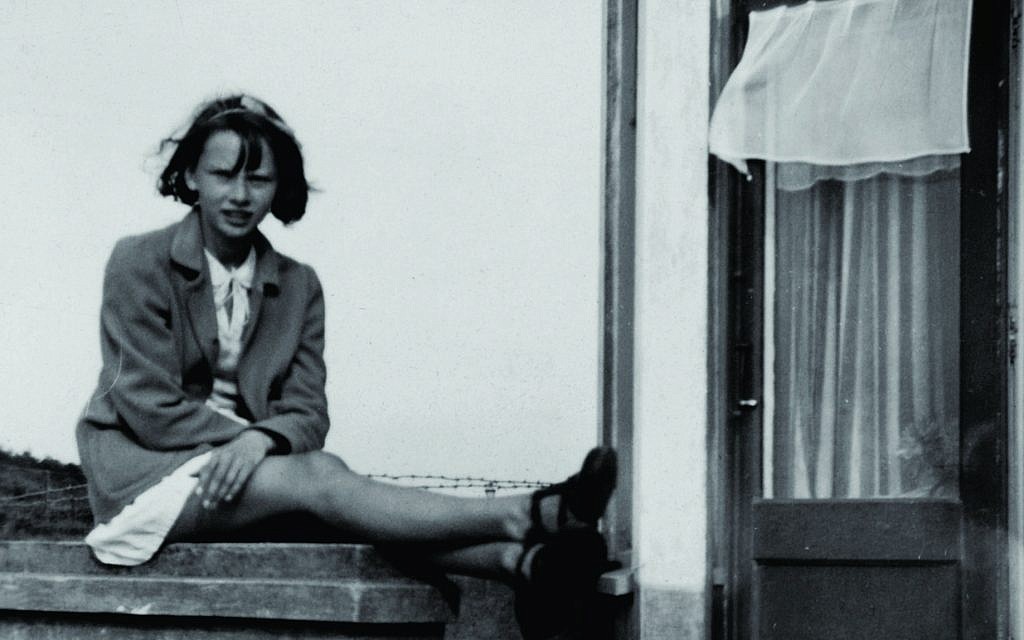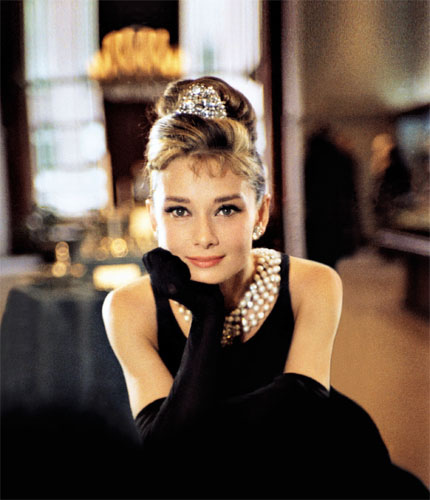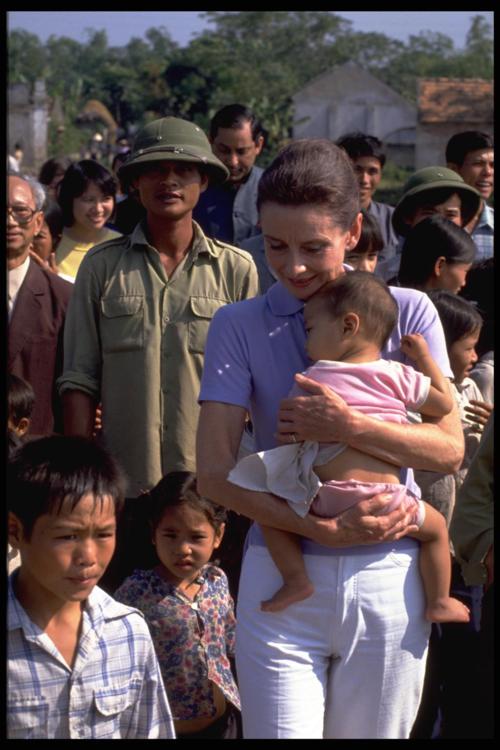Ron Howard and Andy Griffith and Our America, Katherine Hepburn, Triumph over Tragedy and Audrey Hepburn, A Gentle Soul Rising from the ashes of WWII.
Remember the joke in "Airplane"(1980) one of the passengers was reading a magazine about famous Jewish Sports Stars with Sandy Koufax on the cover. Looked like it was only 4 or 5 pages thick. Ron had a heart and a conscience. He was a good kid, with good parents. He was perfectly cast for the Andy Griffith Show.
Andy Griffith spent the last 20 years of his life singing Gospel Music and fighting for out Social Security and Medicare against Republican Cuts. He remembered the difference Social Security and Medicare made to elderly members of his family when he was a boy during the Great Depression. His family viewed Franklin "FDR" Roosevelt and his wife Eleanor as heroes. Without it elderly members of his family would have starved.
When I was a kid, my sports heroes were Hank Aaron, Rico Carty, Joe Torre and Phil Niekro of the Atlanta Braves. The one team we feared was the LA Dodgers, especially when Sandy Koufax was pitching and Maury Wills was running the bases. Maury stole 104 bases in 1962.

Rico Carty nearly died from Tuberculosis and came back to win the batting championship. When you are a kid, you never forget your heroes.
I was furious when Donald Trump gave OUR AMERICAN MEDAL OF FREEDOM to right-wing extremist billionaire Sheldon Adelson's wife Miriam, who bought it with a BRIBE of millions given to the Republican Party. Millionaire Andy Griffith spent the last 20 years of his life fighting for OUR Social Security.


Andy Griffith, Dick van Dyke and James Garner both were warned not to risk their careers by becoming involved in politics, they refused and took a stand for Civil Rights. Here Dick van Dyke before a crowd of 50,000 at the Los Angeles Colosseum.

Brother Tom's Suicide
Tom (left) and Katharine (right) Hepburn
Tom Houghton Hepburn, Katharine Hepburn's brother, was two years her senior. As children, the two were inseparable. Dr. Hepburn encouraged all his children to be very athletic, and it has been said that his expectations for his eldest son could be extreme. Tom had developed a nervous tick due to a childhood illness, and Dr. Hepburn pressured him to use willpower to overcome the problem. He believed that any physical accomplishment could be achieved through willpower, hard work, and puritanical habits of living (Barbara Leaming, 1995, 139-140). Unfortunately, tom-boy Kathy proved to be more of an athlete than her brother, a point Dr. Hepburn often pointed out, congratulating Katharine on her athletic prowess within Tom's hearing. Tom was in fact a fairly competent athlete; he simply failed to measure up to his father's high standards for his children. Many Hepburn biographers attribute this failing on the father's part to Tom's low self-esteem as a youth. Dr. Hepburn is often portrayed as a bully and harsh task-master to his children. However, Miss Hepburn and her siblings hero-worshiped both their parents and constantly strove to impress them. On numerous occasions, Miss Hepburn attributed her success to the fact that she was the product of two extraordinary individuals (The Dick Cavett Show, 1974).

family photo a few months before Tom's death
Katharine far left, Tom standing in rear
Mrs. Hepburn had a very tight circle of friends living in the Greenwich Village area of New York City. Many of them were friends from her Bryn Mawr days, and several were also involved in the social reform movements of the time. Tom and Katharine occasionally stayed with their "aunts" Mary Towle and Bertha Rembaugh, and it was during one of these visits that tragedy struck. When Tom didn't come down to breakfast one morning, 14-year-old Katharine went to fetch him from his attic bedroom. Upon entering the room, she first noticed that the tie from one of the curtains was missing so the drapes hung loose on that side. Then she saw her brother's body, suspended by the curtain tie from one of the ceiling beams, his bent legs clearly able to reach the ground. In a state of shock, Katharine got Tom down from the beam and lay him on the bed. After ascertaining that he was indeed dead, she recalled having seen a doctor's house on their street. She went to the house and rang the bell. The housekeeper answered the door and Katharine told her, "My brother is dead," to which the housekeeper replied, "Then the doctor can't help him, can he? and closed the door in Katharine's face (Hepburn, Me, 1991, 47).
Fearful that her aunt Mary Towle might become hysterical, Katharine went next door to Aunt Bertha's to break the news. The rest of the incident becomes a bit of a blur. Miss Hepburn later remembered her parents coming and crossing on the ferry with Tom's body. Mrs. Hepburn's father had also committed suicide and you must remember that there was a rather strong stigma surrounding suicide in those days (Barbara Leaming, 1995). Suicide was translated as mental instability and was believed to be an inherited trait. Therefore, a history of suicide in the family was not only something one wanted to keep from public knowledge, it also bred the fear that oneself or one's offspring might be threatened by the same problem. One can only imagine how horrified Mrs. Hepburn must have been to discover that her eldest son had succumbed to the same cause of death as her own father. In a documentary about Katharine Hepburn, her brother Bob recalls being at home with Mrs. Hepburn when she received the call from New York that Tom was dead. Even many years later, Bob was reduced to tears as he recalled his usually composed mother slumping over on the kitchen table as she answered the phone call from New York (All About Me, 1993).

Tom's school photo as it appeared
in the local newspaper reporting his death.
There was much public speculation concerning the cause of Tom's suicide. As I've said, some biographers attribute Dr. Hepburn's bullying to a development of low self-esteem. Tom's death was never discussed in the family. In later years, Miss Hepburn speculated that it must have been an accident. No one in the family could find any cause for Tom to suddenly become depressed or suicidal. In her autobiography, Miss Hepburn relates how she seems to remember Tom telling her, during that fateful visit to New York, "You're my girl, aren't you? You're my favorite girl in the whole world" (Hepburn, Me, 1991, 46). But even Miss Hepburn admits that that could be a memory she constructed many years later, half wishing, half hoping it had once been real. One possibility is that Tom was trying to perform an elaborate stunt described by Dr. Hepburn some months prior to Tom suicide. Dr. Hepburn was from Virginia and he would tell a story about how he and his African American friends would play pranks on the northern football teams who came to compete in the south. He showed his children how there was a special knack of tying a rope so that one could suspend oneself from a tree by the neck without cutting off your air supply. Although it is very difficult to find such antics amusing today, it is possible that Tom was trying this stunt but that he lost control of the slippery curtain tie (Hepburn, Me, 1991, 48).
As you can imagine, Tom's death had a dramatic effect on young Katharine. When she returned to the girls school she was then attending, she became frustrated by all the impertinent questions her classmates demanded of her concerning her brother's death. She felt that she lived in a different world than those girls, because she had been forced to grow up so abruptly. She described her new philosophy of life as "onlines:" "What I meant by it was that I wanted to be independent, to separate myself from all the others and never again to care so much about another person, so I would never feel the pain I felt when my teenage brother hanged himself" (Charlotte Chandler, 2010, 1). Katharine left school and began to take lessons from various tutors around Hartford. She much preferred this method of study, not only because it removed her from the society of her nosy peers, but also because it allowed her to play golf competitively; she became quite a champ. She loved riding her bike all over Hartford to her lessons and golf classes.
Katharine would feel the consequences of this less formal schooling when it came to preparations for her entrance to her mother's alma mater, Bryn Mawr College. She had to study extra hard for her entrance exams, just barley scraping the minimum passing marks in chemistry. And, having been away from the society of her peers for so long, she was unprepared for the social life of the all-girl college. Tom's death changed her life irreparably, shaping her into the independent woman the world would come to admire.
I created this presentation in memory of Katherine and her brother Tommy. At least they are together again, as it should be. My own belief, echoed by some of the things Katherine said over the years, Tommy was brilliant, but a gentle soul, which made him different from most kids his own age. At boarding school, this can make you incredibly different and lonely, sometimes the object of bully. As Princess Diana said, gentleness is most often a target for bullies. It was then and it is now. Perhaps Tommy was too gentle for this world. But he lived on through he cherished little sister, who was also his best friend.
Audrey Hepburn became the patron Saint of hungry children, because she had been one.


Audrey Hepburn was born the daughter of Irish Banker father and her Noble Dutch mother born in Brussels Belgium. Her father was very conservative and anti-British, as most Irish are, which has been erroneously interpreted as pro-German, which he wasn't. Her Mom Baroness Ella van Heemstra (12 June 1900 – 26 August 1984), was a Dutch noblewoman. She was the daughter of Baron Aarnoud van Heemstra, who served as Mayor of Arnhem from 1910 to 1920 and as Governor of Dutch Suriname from 1921 to 1928, and Baroness Elbrig Willemine Henriette van Asbeck (1873–1939). At the age of nineteen, Ella had married Jonkheer Hendrik Gustaaf Adolf Quarles van Ufford, an oil executive based in Batavia, Dutch East Indies, where they subsequently lived. They had two sons, Jonkheer Arnoud Robert Alexander Quarles van Ufford (1920–1979) and Jonkheer Ian Edgar Bruce Quarles van Ufford (1924–2010), before divorcing in 1925. Audrey's Mom and Dad met in the Dutch West Indies and married in September 1926, remaining married until 1938. Audrey and her extended family lived in Brussels, England and Holland due to her Dad's job Her parents were separated in 1936, mom, her siblings and Audrey went to the Netherlands in late 1938, which is where they were when Hitler invaded Poland and WWII broke out.
Audrey before the war.

.jpg)
When World War II broke out, she and her family lived in Holland, immediately and secretly becoming involved in the Dutch Underground. Audrey and her family took part in Ballet Recitals, Audrey was a wonderfully ballerina, whose proceeds were secretly used to fund anti-Nazi activities. But there was a price to pay, her uncle was tortured and murdered by the Nazis, a half-brother tortured, went into hiding. The whole family experienced, with all the people of the Netherlands, starvation and daily hunger. Audrey and her family, despite their nobility, experienced starvation As Audrey described later, it was her familiarity with starvation as a child which propelled her into helping UNICEF feed children all over the world.


If you asked Audrey, it was her role as mother and working for UNICEF of which she was most proud. I think she was right.


I grew up in the Bible Belt, I noticed the difference between good and evil, from the time when I was a seven years old.
Donald Trump and Mike Pence began their 2016 campaign in Philadelphia Mississippi in front of an all white audience, many wearing Confederate Flag Shirts and Hats. Can you figure out why? Think about "Pro-Life" Republicans who support the DEATH PENALTY. Like "Pro-Life" Parkland Mass Murderer Nikolas Cruz. He put a Trump/Pence MAGA Hat in his adopted mom's casket, even though she hated Donald Trump. His Mom told friends, that Nikolas became a lost soul after he began watching Fox "News" 24/7. Think about it.















No comments:
Post a Comment